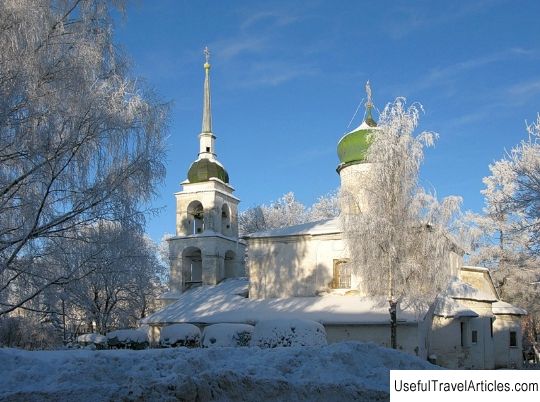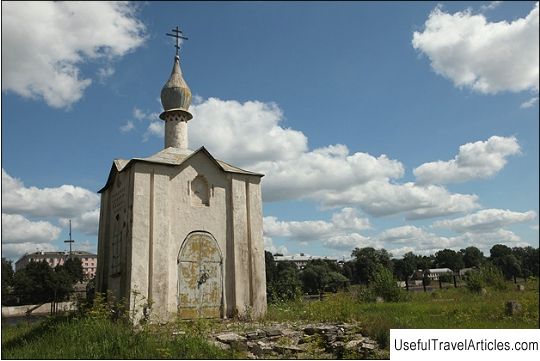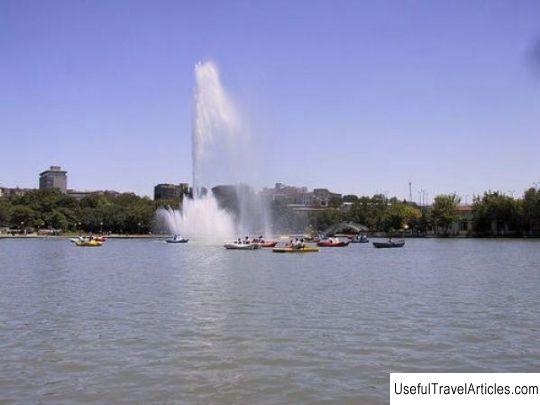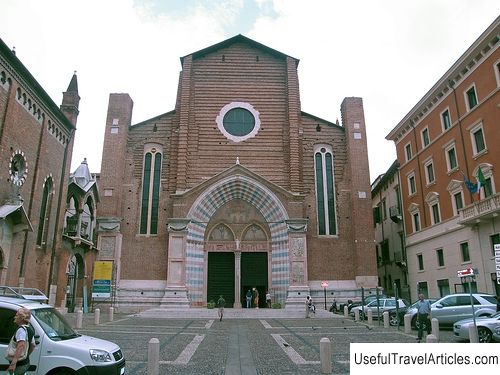Church of Anastasia Romlyanka description and photos - Russia - North-West: Pskov
Rating: 8,1/10 (4054 votes) 
Church of Anastasia Rimlyanka description and photos - Russia - Northwest: Pskov. Detailed information about the attraction. Description, photos and a map showing the nearest significant objects. Photo and descriptionIn the area of the Pskov Children's Park, there is one of the most remarkable temples of the 16th century - the Church of Anastasia Rimlyanka (Anastasia in Kuznetsy). The first mention of this church dates back to 1488, when the church was located in the central part of Polonische and was a one-day one. Not far from the church of Anastasia Rimlyanka, there was the Trupekhovsky gate, built in the period 1374-1375. There is a belief that the construction of the church was carried out by Vasily Dol, who also built the Vasilyevskaya church. It is believed that his wife and daughter were named Anastasia. Pskov residents in one day erected a statue of Anastasia made of wood and erected it on Kuznetskaya Street. The built church is a true monument of Pskov architecture and was once a large parish church. Anastasievskaya church is installed in its volumes on a vaulted powerful basement floor, thus, it can be considered as a two-tiered one. Chronicle sources mention that in 1637, not far from the Anastasievskaya church, a miraculous event happened: when a twelve-year-old boy walked past the church, someone appeared who told him to say that if the locals did not change their lives filled with sins, then the punishment of God will fall upon them. After that, the boy was caught by a strong gust of wind and lifted him to the height of the church cross. Some time later, namely in 1639, a chapel was added to the church, named in honor of St. Paraskeva. The southern and northern chapels of the church are connected by a gallery, and on the west side of the narthex there is a small porch. Cellars were located under the side-altars and galleries, which had entrances from the north and south sides of the temple. The church porch led to the main room of the temple, slightly raised above the sub-church. The temple quadruple is made of four pillars and three apses, and also has one dome, on which a light drum is located on the supporting raised arches. From the southern part, in 1639, a sacristy tent was added, as well as a closed gallery, which included a small narthex, and tightly fitted to the side-altars. The pitched roof, tiered bell tower and narthex were rebuilt during the years 1819-1827 with an architectural focus in the style of Classicism. The facades of the quadrangle and the side-altar have divisions in the form of blades, and the end of the drum and apse are made with decor in the form of a curb and a runner; drum openings are decorated with eyebrows. Despite numerous alterations, one can see the remarkable proportions of the church building, as well as the incredible perfection of the old interior. It is believed that the Church of Anastasia Rimlyanka was one of the most noticeable and beautiful churches in the city of Pskov. In 1539, a terrible fire broke out in the church, during which the vaults of the church collapsed. In 1745, the Anastasievskaya Church was assigned to the Church of St. Basil, located on Gorka. It is known that in 1763 there were 154 parishioners in the church parish. According to the states of 1764, the church of Anastasia the Roman, which was considered to be urban, had about twenty souls in its parish. At the same time, it was supposed to have a sexton, a sexton, a priest, and the money received from the sale of candles had to be spent on the needs of the church. The documents from 1786 stated that the church was dilapidated due to a fire that had occurred, and was scheduled for complete abolition. Already in 1794, the Anastasievskaya church was assigned to the Novo-Ascension church until the 19th - early 20th centuries. In 1808, it was decided to demolish the church as absolutely dilapidated, but the Holy Synod did not agree to this. One of the April days in 1842, Nikolai Milevsky, an archpriest, appealed to the residents of the city with an appeal to recreate again one of the most ancient temples of Pskov. Soon the church was renovated, a completely new iconostasis was made, after which it entered the list of the best churches in the city of Pskov. Now the temple has been transferred to the diocese.        We also recommend reading ShantaDurga Temple description and photos - India: Goa Topic: Church of Anastasia Romlyanka description and photos - Russia - North-West: Pskov. |




